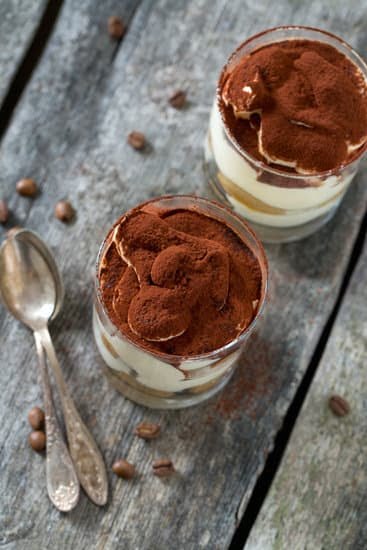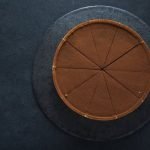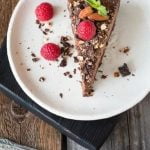A two-tier wedding cake is not only a popular choice for its elegant and sophisticated appearance but also because it offers more versatility when it comes to design and flavor options. However, decorating a 2 tier wedding cake requires careful attention to detail, as it serves as the centerpiece of the celebration.
In this article, we will discuss the necessary tools and equipment needed, tips for selecting the perfect flavor and design, step-by-step instructions on preparing and assembling the cake layers, techniques for crumb coating and frosting, ideas for adding decorative elements, suggestions for finishing touches, troubleshooting tips, and more. Get ready to transform an ordinary cake into a stunning masterpiece that will leave your guests in awe.
When it comes to decorating a 2 tier wedding cake, having the right tools and equipment is crucial. Piping bags, a spatula, a cake turntable, and high-quality supplies are just some of the essential items you will need. We will provide you with a detailed list so you can ensure you are fully equipped before embarking on your cake decorating journey.
Selecting the perfect flavor and design for your two-tiered cake is another important aspect that contributes to its overall aesthetic appeal. Whether you prefer classic flavors or want to explore more unique options, we will offer tips on how to choose flavors that complement your wedding theme. Additionally, we will share popular design choices along with suggestions for creative designs that can truly make your cake stand out.
Stay tuned as we delve into each step of decorating a 2 tier wedding cake in detail. With these expert tips and techniques at your disposal, you’ll be able to create beautifully decorated cakes that are sure to impress every time. So let’s get started on this exciting journey of turning ordinary layers of sponge into extraordinary works of art.
Necessary tools and equipment
When it comes to decorating a 2 tier wedding cake, having the necessary tools and equipment is crucial for achieving a beautifully decorated end result. Here is a detailed list of all the essential tools and equipment you will need:
- Piping bags: Piping bags are essential for creating intricate designs on your cake. Make sure to have both disposable and reusable piping bags in different sizes to accommodate various decorating techniques.
- Spatula: A good quality spatula is essential for applying frosting to your cake layers smoothly and evenly. Opt for an offset spatula as it allows for better control and precision.
- Cake turntable: A cake turntable is a must-have tool when it comes to decorating round or tiered cakes. It allows you to easily rotate the cake while applying frosting or adding decorative elements, ensuring an even coating and consistent design.
- Decorating tips: Various decorating tips are available in different shapes and sizes, each producing different patterns when used with the piping bag. Start with basic round, star, and leaf tips, and gradually expand your collection based on your creativity and desired designs.
- High-quality supplies: Selecting high-quality ingredients is key to achieving a delicious and visually appealing wedding cake. Choose premium baking ingredients such as flour, sugar, butter, eggs, cocoa powder, flavorings, and food coloring that produce superior results.
- Professional grade pans: Invest in high-quality cake pans that ensure even baking by conducting heat evenly throughout the batter. Non-stick pans with straight sides are recommended for easy release of the cakes.
- Offset icing spatulas: These angled spatulas are perfect for smoothing out icing on the sides of your tiers without disturbing any crumbs from the crumb coat layer beneath.
When selecting tools and equipment for decorating your 2 tier wedding cake, always prioritize quality over quantity. Investing in high-quality supplies will not only yield better results but also make your decorating process easier and more enjoyable.
Additionally, consider exploring local baking supply stores or online shops that specialize in cake decorating tools, as they often offer a wider range of options and professional-grade supplies. Remember, the right tools can make a significant difference in achieving a beautiful and well-decorated 2 tier wedding cake that will wow your guests on your special day.
Choosing the perfect flavor and design
Choosing the perfect flavor and design for a 2 tier wedding cake is essential in creating a visually stunning and delicious centerpiece for the special day. When selecting the cake flavor, it is important to consider the preferences of the couple and ensure that it complements the overall wedding theme.
Popular choices for wedding cake flavors include classic vanilla, chocolate, red velvet, and lemon. These flavors are timeless and loved by many, making them safe options for a wide range of guests.
For couples looking to add a unique and creative twist to their wedding cake flavor, there are various options to explore. One idea is to incorporate fruit flavors such as raspberry, strawberry, or passionfruit into the cake layers or filling. This adds a refreshing burst of flavor and can be especially fitting for spring or summer weddings. Another option is to go for more unconventional flavors such as salted caramel, cookies and cream, or champagne-infused sponge.
In addition to choosing an enticing flavor combination, selecting a design that best suits the wedding theme is also crucial. Traditional designs such as smooth buttercream finishes with piped lace details or classic fondant-covered cakes with intricate sugar flowers continue to be popular choices. However, couples who want to showcase their personality and creativity can opt for more unique designs like geometric patterns, watercolor-inspired motifs, or even incorporating elements that reflect their hobbies or interests.
Popular Wedding Cake Flavors
| Classic Flavors | Unique Flavors |
|---|---|
| Vanilla | Salted Caramel |
| Chocolate | Cookies and Cream |
| Red Velvet | Champagne |
| Lemon | Raspberry |
When deciding on the wedding cake design, it is important to consider factors such as the wedding color palette, the venue decor, and the couple’s personal style. It may be helpful to consult with a professional cake decorator who can provide guidance and suggestions based on their experience. Additionally, looking for inspiration from wedding magazines, websites, or social media platforms can help in generating unique and creative design ideas.
Remember, the flavor and design of a 2 tier wedding cake should ultimately reflect the couple’s tastes and personalities. By considering popular choices as well as exploring unique options, couples can create a delightful and memorable centerpiece that will not only satisfy their guests’ taste buds but also enhance the overall aesthetic of their special day.
Preparing the cake layers
To create a beautiful and professional-looking two-tiered wedding cake, it is essential to start with perfectly prepared cake layers. This section will provide a step-by-step guide on how to prepare and bake the cake layers, as well as tips on achieving even and level layers for a polished finish.
- Preparing the cake batter: Begin by selecting a delicious cake flavor that suits the couple’s preferences. Follow the recipe closely, ensuring all ingredients are accurately measured and at room temperature for proper mixing. It is crucial to mix the batter until just combined to avoid overmixing, which can result in a dense and tough texture.
- Baking the cake layers: Before pouring the batter into the pans, make sure they are properly prepared by greasing and lining them with parchment paper. The size of the pans will depend on the desired tier sizes for the wedding cake. Fill each pan with an equal amount of batter, ensuring they are filled no more than two-thirds full to prevent overflow during baking.
- Achieving even layers: To ensure your cake rises evenly, consider using baking strips or wet towels wrapped around the outside of each pan before placing them in the oven. This technique helps insulate the edges of the pans, allowing for more even heat distribution throughout the baking process. Additionally, rotating the pans halfway through baking can also help promote even browning.
- Testing for doneness: Use a toothpick or skewer inserted into the center of each cake layer to determine if they are fully baked. If it comes out clean or with just a few crumbs clinging to it, then your cakes are ready to be removed from the oven.
| Steps | Description |
|---|---|
| 1. Preparing the cake batter | Selecting a flavor and mixing the batter |
| 2. Baking the cake layers | Greasing and lining pans, filling with batter, and baking |
| 3. Achieving even layers | Using baking strips or wet towels, rotating pans |
| 4. Testing for doneness | Checking with a toothpick or skewer for doneness |
Assembling and stacking the tiers
Assembling and Stacking the Tiers: Instructions for Properly Assembling and Stacking the Cake Tiers, Including Tips for Using Dowels or Cake Boards to Ensure Stability and Prevent Collapsing
Once you have prepared the cake layers and they have cooled completely, it’s time to assemble and stack your two-tier wedding cake. This process requires careful attention to ensure stability and prevent any potential collapsing. Follow these instructions along with a few helpful tips to make sure your cake tiers stay intact:
- Prepare the frosting: Before assembling the tiers, make sure you have prepared a sufficient amount of frosting. You can use buttercream, ganache, or fondant depending on your preference. Keep in mind that a thicker consistency is ideal for stacking cakes.
- Level the cakes: Use a serrated knife or a cake leveler to trim off any domed tops from each layer of cake. This will help create a more stable surface for stacking.
- Base layer: Begin by placing a dollop of frosting onto your serving plate or cake board where you plan to display the cake. This will act as an anchor for the first tier.
- Stack with support: For added stability, insert dowels into the base layer of cake before adding the next tier. These dowels should be evenly spaced within the diameter of the bottom tier, forming a stable support structure for the top tier.
- Add subsequent tiers: Gently lower the second tier onto the base layer, ensuring it aligns perfectly with the tier below. If you’re using multiple tiers, repeat steps 3-4 for each additional tier.
- Quantity of dowels: The number of dowels needed depends on the size and weight of your cakes. A general rule is to place one central dowel through all tiers for extra reinforcement and then add additional dowels in a circular pattern within each individual tier every 2-3 inches.
- Frosting between tiers: Apply a generous amount of frosting between each tier to help them adhere together. Smooth and level the frosting with an offset spatula or a cake scraper.
- Final touch-ups: Once all tiers are stacked, check for any unevenness or gaps between the layers. Add more frosting, if necessary, to fill in any imperfections.
Remember to take your time while assembling and stacking the tiers to ensure stability and prevent collapsing. It’s also recommended to refrigerate the cake for at least 30 minutes before adding additional decorations or final touches on top. By following these instructions and utilizing dowels or cake boards for support, you can confidently create a beautiful and stable two-tier wedding cake that will impress your guests.
Crumb coating and final frosting
Crumb Coating: Creating a Smooth Base for Frosting
One crucial step in decorating a 2 tier wedding cake is crumb coating. Crumb coating involves applying a thin layer of frosting to the cake layers to seal in loose crumbs and create a smooth base for the final frosting. This step ensures that the finished cake will have a professional and polished appearance. Here are some techniques for achieving a perfect crumb coat:
Apply a Thin Layer
Start by applying a thin layer of frosting all over the cake using an offset spatula or a bench scraper. Be sure to cover the sides, top, and edges completely while keeping the layer as thin as possible.
Chill the Cake
After applying the crumb coat, refrigerate the cake for at least 30 minutes to allow the frosting to set. Chilling helps firm up the layers and prevent them from shifting or breaking during subsequent steps.
Smooth Out Imperfections
Once chilled, use an offset spatula or a cake smoother to gently smooth out any imperfections on the surface of the crumb coat. If there are noticeable gaps or uneven areas, add more frosting and smooth it out again until you achieve an even surface.
Final Frosting: Achieving Perfection
After completing the crumb coat, it’s time to apply the final layer of frosting. This is where you can showcase your creativity and precision, ensuring that every inch of your 2 tier wedding cake looks flawless. Here are some helpful tips and tricks for perfectly frosting your wedding cake tiers:
Piping Bags and Tips
Fill a piping bag fitted with a large round tip or an offset spatula with the desired amount of frosting for each tier. Having different piping bags will allow you to easily switch between colors or flavors without cross-contamination.
The Right Technique
Start from the top of each tier and gently swirl the frosting in a circular motion, working your way down to the sides. Continue repeatedly until the entire tier is covered with an even layer of frosting. Use a rotating cake turntable for better control and accessibility.
Smooth Finish
To achieve a smooth finish, dip an offset spatula or a bench scraper in hot water and wipe off any excess. Gently run it along the sides and top of the cake while turning the turntable. This will help create clean lines and remove any excess frosting.
Remember, practicing these techniques will improve your skills over time, so don’t be discouraged if your first attempts aren’t perfect. With patience, attention to detail, and practice, you can master the art of crumb coating and final frosting to create beautifully decorated 2 tier wedding cakes.
Adding decorative elements
When it comes to decorating a 2 tier wedding cake, adding decorative elements is where your creativity can truly shine. There are numerous possibilities for enhancing the visual appeal of your cake and making it a stunning centerpiece for any wedding. Here are some ideas and techniques to consider:
- Edible Flowers: One way to add natural beauty to your 2 tier wedding cake is by incorporating edible flowers. These delicate blossoms not only provide an eye-catching element but also bring a touch of elegance to the design. Popular choices include lavender, pansies, rose petals, or even fresh herbs like mint or thyme. Ensure that the flowers you choose are pesticide-free and safe for consumption.
- Piping Intricate Designs: Piping is a technique that allows you to create intricate designs using frosting or royal icing. Whether you prefer classic patterns or more modern geometrical shapes, piping gives you endless possibilities to add texture and detail to your cake tiers. With practice and patience, you can master techniques such as lacework, rosettes, scrollwork, or even create personalized monograms.
- Applying Fondant Accents: Fondant is a versatile icing that can be rolled out like dough and easily shaped into various decorations for your 2 tier wedding cake. From elegant bows and ribbons to delicate ruffles or intricate appliques, fondant accents offer a clean and polished look. It’s important to work with fondant when it’s at room temperature for better pliability and smoother results.
- Using Stencils: Stenciling is an excellent technique that allows you to achieve professional-looking designs with precision and ease. By placing a stencil on your frosted cake tiers, you can dust powdered sugar or sprinkle edible glitter to create elegant patterns or intricate motifs. Stencils are available in a wide range of designs, from floral and lace to geometric shapes and personalized monograms.
Remember, each decorative element should complement the overall design of the wedding cake and reflect the couple’s style and theme. It’s essential to practice these techniques on smaller cakes or practice boards before applying them to your final masterpiece. With careful planning and attention to detail, you can create a visually stunning 2 tier wedding cake that will leave a lasting impression on everyone involved in the special day.
Finishing touches
When it comes to decorating a two-tier wedding cake, the finishing touches can truly elevate the overall look and make it a showstopper. Adding these final touches not only adds visual appeal but also allows the couple to incorporate personal elements into their cake design. Here are some suggestions for adding those extra special finishing touches:
Ribbon Bands
One popular and timeless option is to add ribbon bands around each tier of the cake. This simple yet elegant touch can match the color scheme of the wedding or complement any specific design elements that have been incorporated into the cake itself. It adds a polished finish and creates a cohesive look between the tiers.
Edible Pearls
If you’re looking for a touch of sophistication and glamour, consider using edible pearls as decorative accents on your cake. These delicate pearls can be applied individually or crafted into beautiful patterns, such as borders or cascading strands. They add texture and an element of luxury to your creation.
Gold Leaf Flakes
For those seeking a truly luxurious and opulent look, incorporating gold leaf flakes into the design is an excellent choice. This technique involves applying carefully placed gold leaf flakes onto select areas of the cake, creating a stunning metallic effect. Whether used sparingly to highlight specific details or applied more generously for an all-over shimmer, gold leaf flakes instantly elevate the visual appeal of any two-tiered wedding cake.
Personalized Cake Toppers
To add a unique and personal touch to your cake, consider using personalized cake toppers. These can be customized to reflect aspects of the couple’s personality, interests, or even their love story. Options include monogrammed initials, miniature figurines depicting hobbies or professions, or even custom-made replicas of the couple themselves. Personalized cake toppers not only make for great conversation starters but also serve as lasting mementos of the couple’s special day.
Remember, the finishing touches on a two-tier wedding cake should reflect the couple’s style and vision for their big day. Whether it’s using ribbon bands, edible pearls, gold leaf flakes, or personalized cake toppers, these final additions can truly enhance the overall look and create a memorable centerpiece that will delight both the couple and their guests.
Troubleshooting
During the process of decorating a two-tier wedding cake, there can be various common issues that may arise. It is essential to be prepared for these mishaps and have practical solutions readily available. By being aware of these potential problems and knowing how to troubleshoot them, you can ensure a smooth decorating process and a beautifully decorated cake.
One common issue that may occur is uneven layers or a cake that bulges or leans to one side. This can happen due to uneven baking or improper stacking. To fix this issue, it is crucial to level the cake layers properly before stacking them. You can use a serrated knife or a cake leveler for this purpose. Additionally, ensure that each layer is aligned correctly and centered on top of the lower tier before adding any frosting or decorations.
Another problem that may arise is air bubbles trapped in the buttercream frosting, which can result in an uneven surface. To prevent this, make sure to remove any air pockets by gently tapping the cake on a counter after applying the frosting. Alternatively, you can use a small offset spatula or an icing smoother to push out any air bubbles as you apply the frosting.
Additionally, fondant cracking or tearing while applying it to the cake is another issue that may occur during decoration. To avoid this problem, make sure your fondant is rolled out evenly and not too thick. Use cornstarch or powdered sugar for dusting your work surface to prevent sticking. If cracks or tears do appear, gently smooth them out with your fingers while applying light pressure.
By being proactive and prepared for these common issues, you can confidently troubleshoot and fix any mishaps during the cake decorating process. Remember that practice makes perfect when it comes to troubleshooting and gaining experience will help you become more skilled at handling these challenges in the future.
Conclusion
In conclusion, decorating a 2 tier wedding cake requires a combination of skill, creativity, and attention to detail. Throughout this blog post, we have explored the necessary tools and equipment needed for the task, as well as tips for selecting the perfect flavor and design to suit the wedding theme. We have also provided step-by-step instructions on preparing and assembling the cake layers, along with techniques for crumb coating and frosting.
One of the key takeaways from this post is the importance of patience and practice when it comes to decorating a 2 tier wedding cake. It is essential to allow yourself enough time to fully prepare and execute each step, ensuring that you achieve a professional finish. While there may be some challenges along the way, don’t be discouraged. Remember that every mishap is an opportunity to learn and improve your skills.
We also want to encourage our readers to share their own experiences in decorating 2 tier wedding cakes. Each person brings their unique creativity and perspective to their cake decorating projects, and we would love to hear about your triumphs and challenges. By sharing your stories, tips, and photos of your beautiful creations, we can inspire others in their own cake decorating endeavors.
Frequently Asked Questions
How to layer a 2 tier cake?
Layering a two-tier cake involves carefully assembling and securing the individual cake layers on top of each other to create a stacked structure. To start, you’ll need to prepare both tiers by baking and cooling your desired cake flavors. Once cooled, level off any uneven tops to ensure even layers. Place one layer of the bottom tier on your serving plate or cake board and apply a thin layer of frosting or filling on top.
Gently place the second layer directly on top, ensuring it is level and centered. Repeat this process for the top tier, stacking it directly on top of the bottom tier. Secure the tiers together using dowels or support rods inserted vertically through the center, providing stability throughout the structure. Finally, frost and decorate your layered cake as desired.
How many layers should a 2 tier cake have?
The number of layers in a two-tier cake depends on personal preference and design choices. Generally, each tier can have multiple layers to add height and visual appeal to the finished cake. It is common for each tier to have four to six layers, but this can be adjusted based on taste and desired aesthetics.
The goal is to create a balanced ratio between cake and filling while maintaining structural integrity throughout each layer. Remember that thicker layers may require modifications like dowels for stability.
What is the difference between a 2 tier cake and a 2 layer cake?
The difference between a two-tier cake and a two-layer cake lies in their structural design rather than just quantity alone. A two-tier cake refers to a multi-level creation with separate tiers stacked vertically, often connected with supports like dowels or pillars.
Each tier can contain multiple layers of cake, typically filled with frosting or filling between them for added texture and flavor variation.

Welcome to our cake decorating blog! My name is Destiny Flores, and I am the proud owner of a cake decorating business named Cake Karma. Our mission is to provide delicious, beautiful cakes for all occasions. We specialize in creating custom cakes that are tailored specifically to each customer’s individual needs and tastes.





